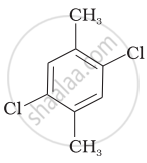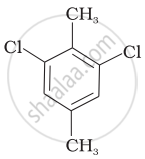Advertisements
Advertisements
प्रश्न
Reaction of \[\ce{C6H5CH2Br}\] with aqueous sodium hydroxide follows ______.
पर्याय
SN1 mechanism
SN2 mechanism
Any of the above two depending upon the temperature of reaction
Saytzeff rule
उत्तर
Reaction of \[\ce{C6H5CH2Br}\] with aqueous sodium hydroxide follows SN1 mechanism.
Explanation:
Greater the stability of carbonation, greater will be its ease of formation from alkyl halide and faster will be the rate of reaction. In case of alkyl halides, 3° carbocations.
For the same reasons, allylic and benzylic halides show high reactivity towards the SN1 reaction. The carbonation thus formed gets stabilized through resonance as shown below:

So, as the given compound, \[\ce{C6HCH2Cl}\] is a benzylic halide, it would undergo SN1 reaction.
APPEARS IN
संबंधित प्रश्न
Give reasons : n-Butyl bromide has higher boiling point than t-butyl bromide.
Explain why alkyl halides, though polar, are immiscible with water?
For the same alkyl group, an alkyl bromide has a higher boiling point than alkyl fluoride because:
How many structural isomers are possible for a compound with the molecular formula C3H7Cl?
The decreasing order of boiling points of alkyl halides is:
Arrange the following compounds in increasing order of their boiling points.
(a) \[\begin{array}{cc}
\ce{CH3}\phantom{.................}\\
\backslash\phantom{.............}\\
\ce{CH - CH2Br}\\
/\phantom{.............}\\
\ce{CH3}\phantom{.................}
\end{array}\]
(b) \[\ce{CH3CH2CH2CH2Br}\]
(c) \[\begin{array}{cc}
\phantom{...}\ce{CH3}\\
\phantom{}|\\
\ce{H3C - C - CH3}\\
\phantom{}|\\
\phantom{..}\ce{Br}
\end{array}\]
Which of the following compounds will have the highest melting point and why?
| (I) |  |
|
(II) |
 |
| (III) |  |
Arrange the following compounds in increasing order of their boiling points:
CH3CH2OH, CH3−CHO, CH3−COOH
Arrange the isomeric dichlorobenzene in the increasing order of their boiling point and melting points.
Write the structure of the following organic halogen compound.
4-tert-Butyl-3-iodoheptane
